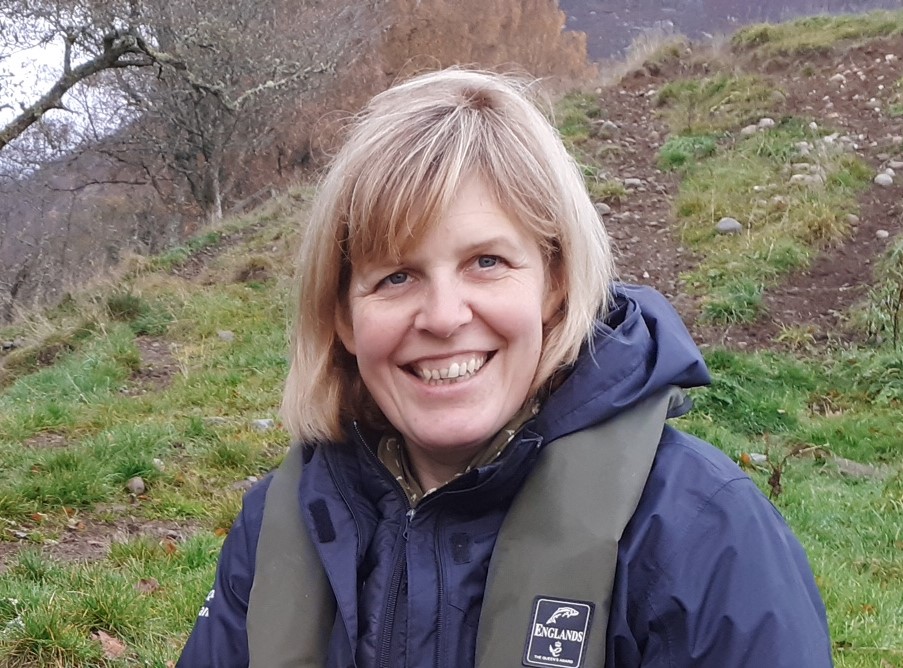Cairngorms Nature: Amazing Molluscs

Cairngorms Nature: Amazing Molluscs
On a chilly day in November 2014, I headed out with Pete Cosgrove of Alba Ecology to a tributary of the Upper Spey hoping to find some Freshwater Pearl Mussels! We made our way up the burn, and feeling our way with our tangs, long sticks with a pincer shaped end, essential to avoid stepping into a dark deep pool and chilly snow melt water overtopping my waders. Pete, after 25 years of surveying over 1,300 rivers in Scotland, has developed a sixth sense for where mussels might hang out, within seconds Pete found one and then so did I. Under licence, we could remove the mussels for a few minutes to take measurements. I don’t think I’ll ever forget holding that mussel which was over 100 years old, the idea that it had been sitting quietly filtering water throughout the whole of the last century was amazing.
In total we only found three mussels in 3km of suitable habitat, Pete explained that even though the stable bed of the burn, which was lined with trees, provided really good habitat for mussels he hadn’t expected to find many. Like so much of the accessible burns in the River Spey catchment they’d come under years of pressure from people hunting for pearls, with stories before the ban in 1998 of mussels removed by the sack load as unscrupulous pearl fishers paid no heed for the future of this remarkable mollusc.
Over the last eight years I’ve spent many more days out with Alba Ecology, the Spey Fishery Board, UHI and NatureScot, working together we aim to restore mussel populations to the Upper Spey. To do this we are trying to learn more about their distribution and populations. We’ve taken samples for genetic analysis and eDNA, we’ve surveyed likely tributaries and we’ve talked to other researchers.
They depend on salmon and trout, with young mussels or glochidia moving through the water like wee pac -men waiting to be inhaled in, where they snap onto the gills of the fish, there they will stay nice and safe for up to eight months before dropping off and burying down into the sediments of the river bed where they can live for many years filtering up to 50 litres of water a day each, providing all of us, salmon and trout and 53 distilleries with clean water.
Mussels need clean gravel to live in and that’s why silty water and non-native water crowfoot roots can physically smother them. We also know that pollution and high levels of metals and nutrients can disrupt their growth and possibly reproduction causing long term impacts on the population.
A few months ago Pete and I met to discuss the mussel project and as we walked along the banks of the Spey, Pete just happened to look down into the water and spied a pile of mussel shells… closer investigation revealed a mussel kill, over 100 mussels had been deliberately cut open and thrown back into the river, it’s unlikely that any of them had a pearl. With an average age of 100 with some closer to 120, words can’t really express our sadness and anger at that this is still happening.
We should be really proud to still have mussels in the River Spey but they are in trouble from poaching, habitat loss, pollution and climate change. In the dry summer of 2018 we estimate that we lost a further 50% of our mussels because they were left high and dry as water levels dropped.
We’ve been training our Cairngorms Ranger Team, but would also like to appeal to anyone out on the river, if you see any suspicious behaviour or piles of shells in the water or close to the river please contact Police Scotland’s Wildlife Crime Unit on 101.
To find out more Freshwater pearl mussel | NatureScot Alba Ecology-Mollusc of the Glen
Alert
Latest from the National Park
Pulling together in wake of wildfires
An update from Park Authority Convener Sandy Bremner and Chief Executive Grant Moir on collective efforts to tackle wildfires in the National Park going forward.
The Moorland Indicators of Climate Change Initiative
Update on wildfire situation
Convener Sandy Bremner and Chief Executive Grant Moir have given an update on the ongoing wildfire situation.
Relevant alerts
-
There is an extreme risk of wildfire impacting the National Park from Friday 11 July until Monday 14 July.
- Do not light any fire or barbeque
- Always ensure cigarettes are fully extinguished and take your litter (including glass) away with you
- Enjoy the outdoors responsibly - most wildfires are caused by human activity
- Stay alert - with dry vegetation and warm weather, fires can start easily, spread rapidly, and burn intensely
- If you see a wildfire, dial 999
For updates, visit the Scottish Fire and Rescue Service website.




